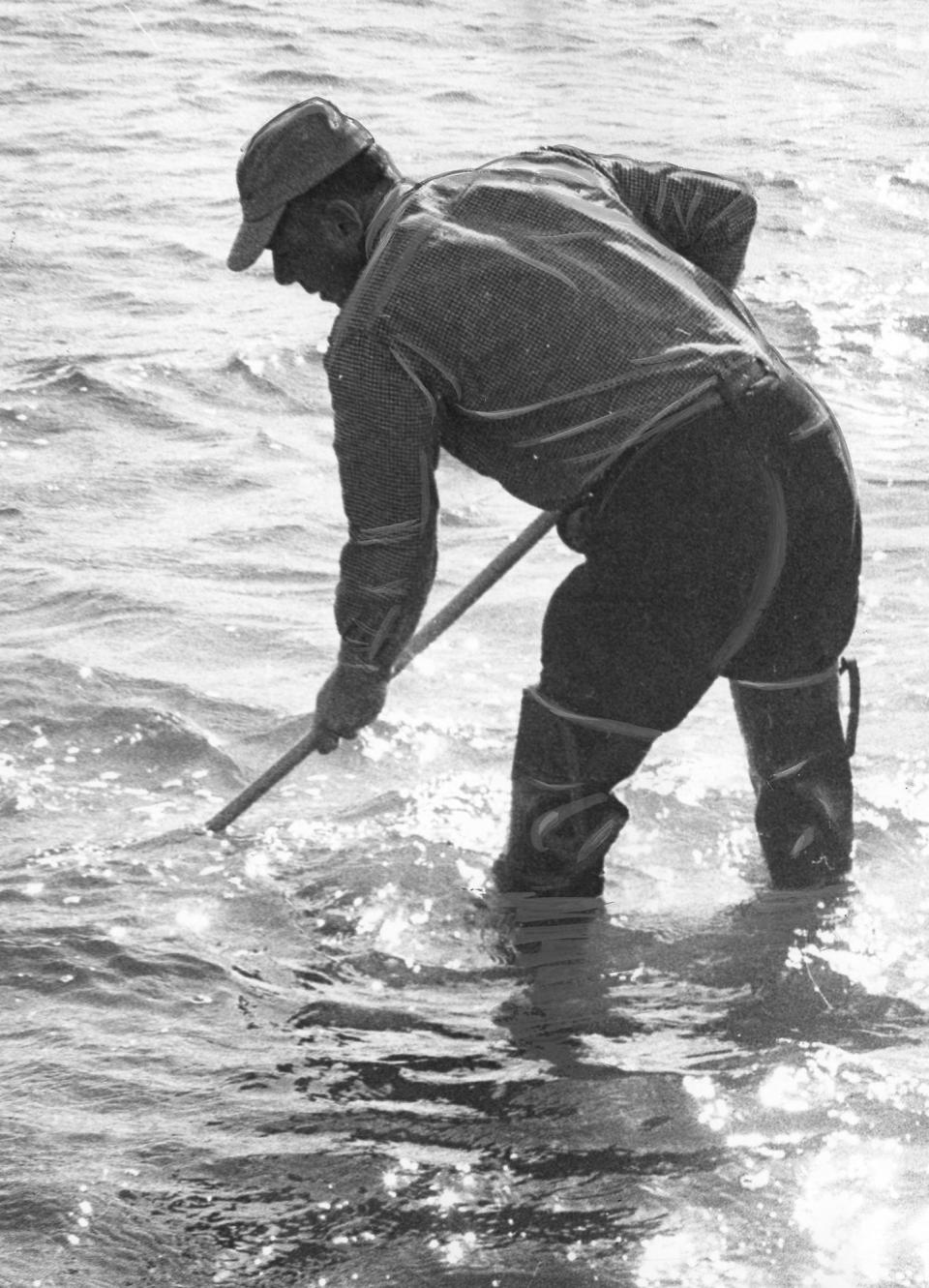Everything you need to know to harvest quahogs in Rhode Island.
PROVIDENCE – The heart and soul of the quahog fishery in Rhode Island are the bullrakers and divers who harvest from beds off the Narragansett Bay shoreline.
Their hard work supplies grocery stores, seafood dealers and restaurants with the tasty mollusks that end up on our dinner plates. They’re also the ones who are raising the alarm about a decline in quahog numbers in the Bay.
But there are still quahogs to be found in Rhode Island and you don’t have to be a professional to get them.

What do you need to harvest quahogs and clams?
You don’t need a long-handled rake or boat to reach them. Just head out around the shore at low tide and you should be able to dig for clams.
A special clam rake with a basket on the end is a big help, but you can also use garden tools or do as the original inhabitants of the land did and feel for quahogs with your feet, a technique known as treading.
Make sure you have a clam gauge with you, so you don’t take any juvenile quahogs smaller than one inch thick at the hinge.
As for other items you’ll need, pack a cooler with ice to store your harvest, a hat, sunscreen, clothes you don’t mind getting wet and water shoes.
Do you need a license to go clamming in Rhode Island? And what is the daily limit?
Unlike commercial shellfishermen, recreational harvesters who are Rhode Island residents don’t need a license to go clamming. For non-residents a license is required – a 14-day license is $11, and an annual one is $200. A non-resident property owner can buy an annual license for $25.
The daily harvest limit in shellfish management areas is one peck, which is equivalent to two dry gallons. In non-shellfish management areas, the limit is half a bushel, which is about four dry gallons. If those amounts are hard to picture, you can buy peck and half-bushel baskets at a hardware store or bait shops. You’ll need floats to go with them.
Go online to dem.ri.gov/programs/water/shellfish/ to see maps of the respective areas.
Quahogging is allowed sunrise to sunset, year-round, but restrictions can apply, depending on water conditions. For the latest updates, the Department of Environmental Management maintains a hotline at 222-2900.
Where are the best places to go clamming in Rhode Island?
Some tried-and-true places to go include Potter Cove in Jamestown, the waters near the Bristol Town Beach, Point Judith Pond in Narragansett, Rocky Point in Warwick and Sapowet Marsh in Tiverton.
But keep in mind that wherever you go, quahogging for the first time isn’t easy. It takes practice before you can fill a basket with ease.
This article originally appeared on The Providence Journal: How to harvest clams and quahogs in Rhode Island: Equipment, licenses, where to go

